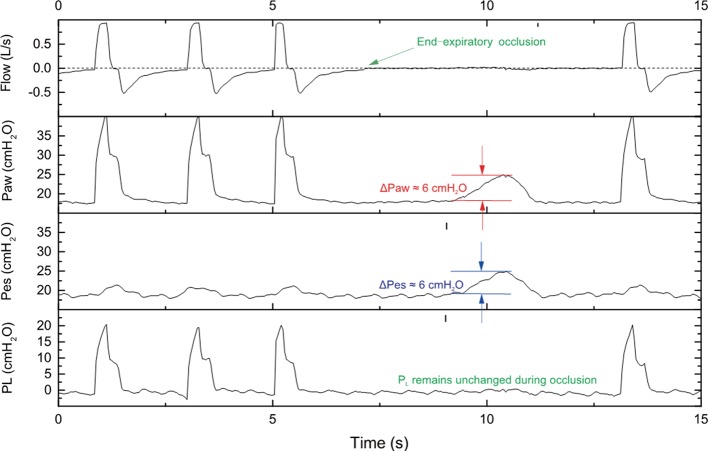Figure 2.
Positive pressure occlusion test during passive ventilation. During an end-expiratory occlusion, the patient was not able to generate any inspiratory effort since the patient was ventilated passively (no spontaneous effort for inspiration). A clinician need to manually compress the chest wall or abdomen to generate a transit increase in pleural pressure (∆Pes). The positive change in airway pressure (∆Paw) is identical with the positive change in esophageal pressure. Also, the transpulmonary pressure remains unchanged during end-expiratory occlusion. In this case, the change in esophageal pressure can be used to surrogate the change in pleural pressure. PL, transpulmonary pressure.

